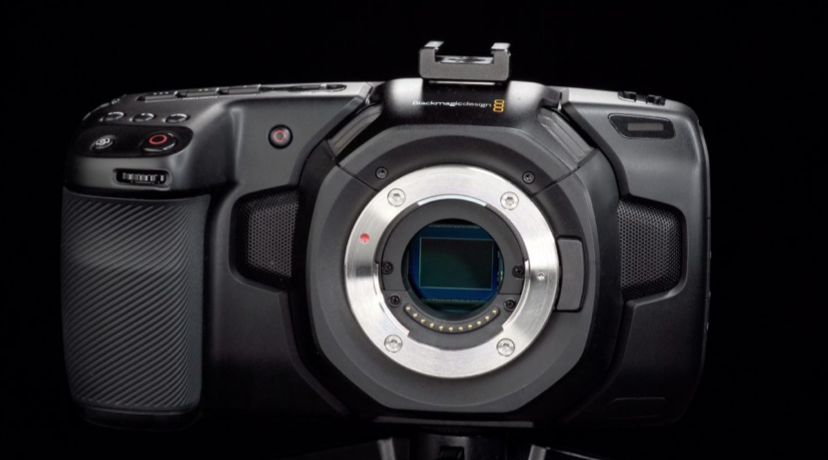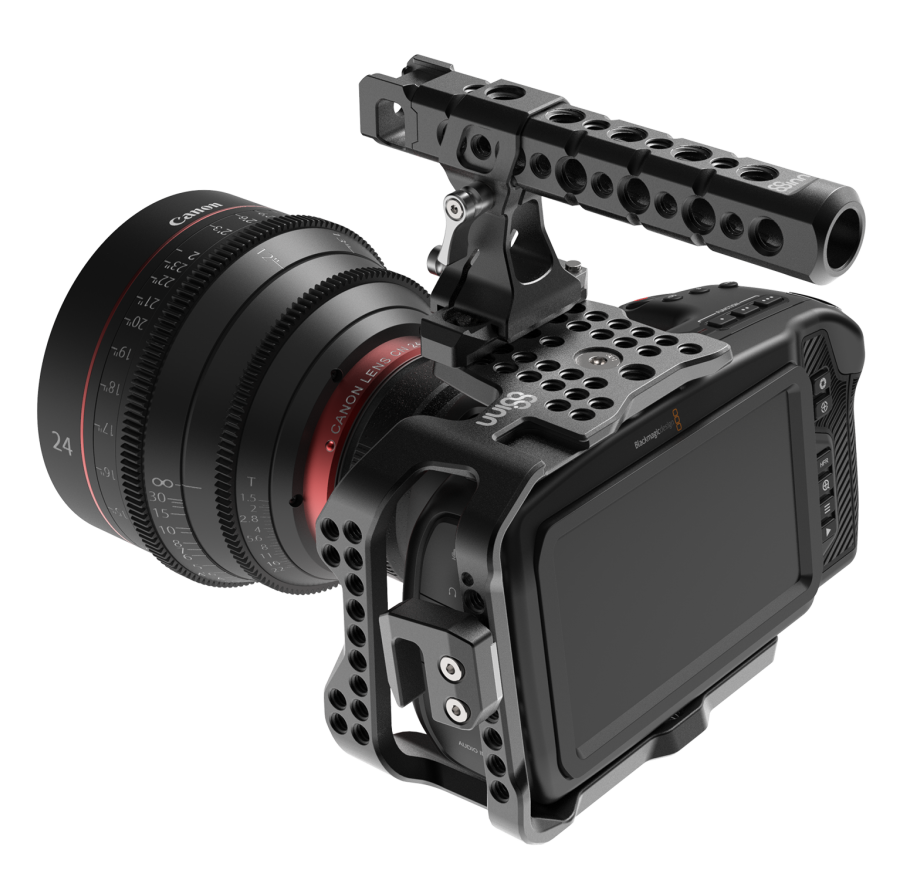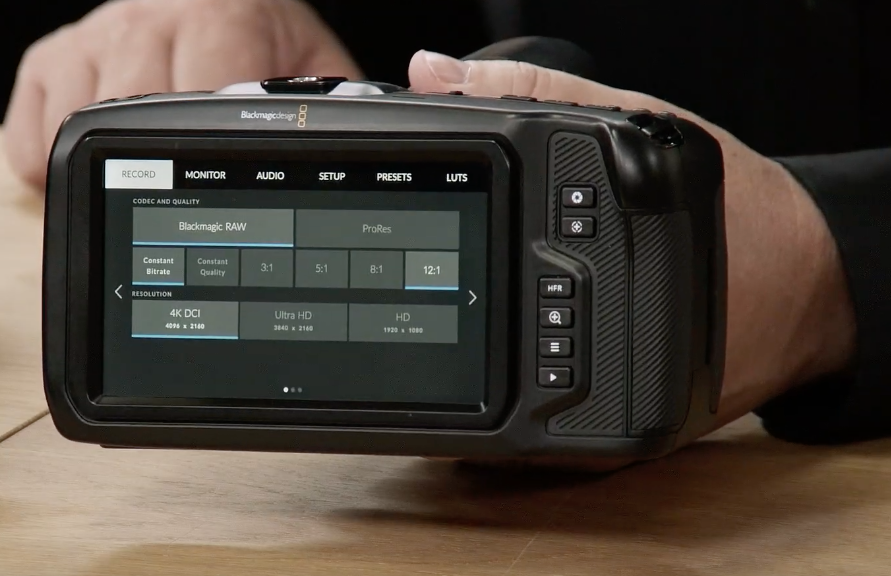
Blackmagic has just announced Camera Setup 6.2 which adds Blackmagic RAW Codec support to the Pocket Cinema Camera 4K.
What’s new for Pocket Cinema Camera 4K
- Added Blackmagic RAW codec support.
Added Constant Bitrate 3:1, 5:1, 8:1, 12:1 recording for Blackmagic RAW.
Added Constant Quality Q0 and Q5 recording for Blackmagic RAW.
Added support for double tap on touchscreen zoom.
Changed tap to focus behavior to tap and hold to focus.
Removed CinemaDNG formats

This is something we all knew was eventually going to happen and Blackmagic hinted way back at IBC last year that the Pocket Cinema Camera 4K would indeed receive Blackmagic RAW codec support. It is also interesting to see that Blackmagic have removed CinemaDNG formats from the camera entirely. This really does show that the company is moving away from CinemaDNG and concentrating entirely on Blackmagic RAW. Cinema DNG has also been removed from the URSA Mini Pro 4.6K

Pocket Cinema Camera 4K users can record over 2 hours of full cinematic quality Blackmagic RAW footage in 4K on a single 256GB SD UHS-II card. With Blackmagic RAW 12:1 you can even record 4K DCI images to an SD card, giving you stunning cinematic quality images on incredibly small, inexpensive cards. In addition, Blackmagic RAW gives customers an even faster, more fluid and higher quality editing and color correction workflow in DaVinci Resolve than ever before.
Once the camera has been updated, customers can choose between 3:1, 5:1, 8:1 and 12:1 constant bit-rate recording or between constant quality Q0 and Q5 recording. This lets them prioritize image quality or file size. The constant bit-rate encoding options give customers incredible images at predictable and consistent file sizes. Constant quality Q0 and Q5 use variable bitrate encoding so complex frames are encoded at higher data rates, preserving the maximum amount of detail and quality possible. Blackmagic Design Generation 4 Color Science is used for superior imaging that results in extremely accurate skin tones and gorgeous, lifelike colors. Blackmagic RAW images are encoded using a custom non-linear 12-bit space designed to provide the maximum amount of color data and dynamic range. In addition, Blackmagic RAW features extensive metadata support, highly optimized GPU and CPU accelerated processing on the desktop and more.
If you aren’t familiar with how Blackmagic RAW works you can watch the interview we did at IBC.
Development of Blackmagic RAW started almost 3 years ago and the URSA Mini Pro and BMPCC 4K were designed with Blackmagic RAW in mind.
What makes Blackmagic RAW so special is just how small the 12-bit RAW files are. For example, a UHD Blackmagic RAW file shot in 12:1 compression has a data rate of just 32MB/s. As a comparison that data rate falls in between a ProRes Proxy and ProRes LT file. At 8:1 a UHD file is 48MB/s. At 5:1 it is 76MB/s. At the lowest compression of 3:1, the data rate is a rather small 127MB/s, that’s comparative to a ProRes 422 file.
If you shoot 4.6K 30p in 12:1 using a 256GB CFast 2.0 card you can record 92 minutes of footage.
Blackmagic RAW is open source so it will work on any platform. With an open SDK, developers can implement Blackmagic RAW into their software. This means it is extremely likely that Adobe and Apple are sure to include the ability to use Blackmagic RAW in their NLE systems. You would think that Apple might be reluctant to integrate Blackmagic RAW as they already have ProRes RAW, but both companies share a very close working relationship.
I’m surprised that Blackmagic RAW hasn’t found its way into some other companies cameras. Blackmagic have said that they are very open to letting just about anyone use Blackmagic RAW as opposed to making it a closed system.
Blackmagic RAW is a big step forward in allowing high-quality images to be captured while maintaining relatively small file sizes.
- You can download the new camera update here.






